#479 On the wings of forever
February 05th, 2019

ESSAY: Universal Technologies and Traditional Innovations: A Comprehensive Perspective for Museums
by Yosef Wosk
An Ormsby Exclusive, in collaboration with the The Canadian Academy of Independent Scholars
We are pleased to present an essay by Yosef Wosk about nothing less than mankind’s accumulation and appreciation of shared knowledge and wisdom. This extraordinarily vast subject was originally the basis for his closing keynote address at the British Columbia Museums Association annual conference in Kelowna, October 23, 2018.[1]
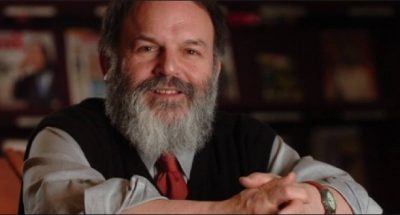
Yosef Wosk: “I have come to appreciate all existence as a choreographed dance, a pas de deux of dynamic and static technologies.”
With prose as profound and learned as it is clear and accessible, here Wosk examines and appreciates the role of museums and museum workers in the digitizing modern world. It’s not gloom ‘n’ doom. Instead, he outlines what he calls “a stirring vision, one of innovative technology on a human scale, heart-centred and soul-sized.”
Wosk touches on topics ranging from tradition, knowledge, information, innovation, technology, artificial intelligence, virtual reality, the role of media, to the nature of wisdom.
Here are just a few samples of his insights–both poetic and audacious:
- A digital river of instantaneous communications has been released; a river without banks in a world without borders. We have now harnessed our combined brainpower and live in a synergistic Global Brain.
- Tradition is not an archaic punishment: It is wings and roots, an archive of humanity’s accumulated information distilled into knowledge and ripened into wisdom.
- Be an independent thinker; speak up and act out. Listen for the Muses themselves to guide you. These inner voices and eternal spirits — as much as anything you’ve studied in the academy — are at your service.
- You don’t have to wait for the weekend to take time off. Any moment can be liberated from the incessant parade of what is often self-imposed modern slavery. Take a moment, any moment, this moment, to declare your freedom from innovation, from action, from deadlines.
- We are not just an encapsulated bundle of flesh and bones but rather a grand experiment, a partnership of matter and mind.
Sit back and enjoy the fruits of Yosef Wosk’s deep learning and wide range of cultural, literary, and philosophical readings in this memorable essay. – Ed.
*
“Who knows what I’m going to speak about today?”
That is the question that Nasreddin — the venerable yet mischievous mullah — posed to those assembled in the 13th century village mosque.
Stunned, the villagers answered, “No, no, of course we don’t!”
To which he replied, “Well, then, I refuse to waste my time on a bunch of ignoramuses like you,” and he turned and left the pulpit.
The next day Nasreddin was invited back.
Once again he asked: “Who knows what I’m going to speak about today?”
This time, afraid that he would leave, they called out: “I do; we do!”
To which he replied: “If you already know, then I don’t need to waste my time repeating it.” And he left the building.
Even though the people were perplexed, they still wanted to hear the teacher’s wisdom and so they invited him back a third time.
“Who knows what I’m going to speak about today?” he asked.
This time they had a plan, so half answered, “Yes, I do, we do” and the other half responded, “No, no we don’t.”
To which he replied: “Good! Then let those who know tell those who don’t.” And with that he left for the last time.
Let me explain what I mean by “Universal Technologies and Traditional Innovations.” The theme of the B.C. Museums Association conference in October 2018 was “Innovation & Technology,” but I felt constrained by those words, by how they are conventionally used, so I decided to open the conversation to include a more comprehensive perspective. Therefore, here is a breakdown of my title:
Universal: I will discuss some theories of the universe in an attempt to place our topic in greater context, in what I refer to as “a comprehensive perspective”.
Technologies: I will attempt to define technology by presenting a general overview of the term and describing it as a vehicle.
Traditional: I will reintroduce the importance of tradition and the depth of wisdom.
Innovation: We will celebrate the constant birth of creative innovation, not just as a value in itself but how it complements the past and drives evolution.
Technology
I am using the word “technology” in its widest possible connotation, not just to apply to machinery, electronics, and automation, but rather to encompass all the arts and building blocks of civilization from physical mechanics to grammar and fine arts.
Marshall McLuhan spoke about technologies as extensions of our bodies and minds. For example, the shoe is an extension of the foot, i.e., it is a means of transportation. Over time we domesticated animals, invented the wheel, built wagons and boats, then, in more recent centuries, we developed the train, automobile, and airplane, until now we are “Knock, knock, knockin’ on heaven’s door”[2] with interplanetary space travel and orbiting telescopes that are attempting to peer back to the inception of the known universe.[3]
In his groundbreaking 1967 book, The Myth of the Machine: Technics & Human Development, Lewis Mumford observed that “[Humanity’s] great discoveries were not physical tools nor the technics based on them. A stone axe endures and can be examined by an archaeologist, so it is natural that he should lay stress on it. Vastly more important to early [humanity], however, were the intangible things that have left little or no trace — ritual, social organisation, and, above all, the tremendous invention of language.”[4]
It could be argued that today we only use “tech” to refer to applied science, but remember that the word science itself derives from the Greek root scientia, meaning any knowledge.
The word “technology” entered our language gradually. In the 1600s it meant “discourse or treatise on an art or the arts”, from the Greek tekhnologia, a “systematic treatment of an art, craft, or technique”, originally referring to grammar. The meaning “science of the mechanical and industrial arts” is first recorded in 1859, while the modern term “high technology” was not used until 1964 — its short form, “high-tech”, appearing in 1972.[5]
The Roman philosopher Cicero praised the human ability to transform the environment and create a “second nature”. Biblical literature also described people as being created b’tselem Elokim, in the shadow or reflected image of God.[6] We possess self-reflective consciousness and have evolved to become the universe made conscious of itself. All that we do is in imitation of nature, discovering nature, amplifying or recombining nature.[7]
Now let us add a further dimension to the meaning of technology. Technology is not just an anthropocentric phenomenon but rather a cosmological constant: it exists everywhere and always.
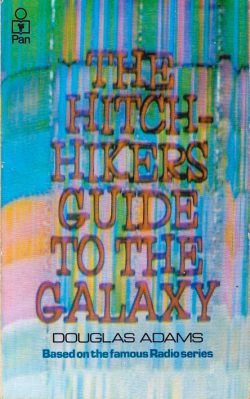 Although we cannot yet say with certainty that we know why the universe exists, there are many theories. Douglas Adams, author of A Hitchhiker’s Guide to the Galaxy,[8] humorously conjectured that “There is a theory which states that if ever anyone discovers exactly what the Universe is for and why it is here, it will instantly disappear and be replaced by something even more bizarre and inexplicable. There is another theory which states that this has already happened.”[9]
Although we cannot yet say with certainty that we know why the universe exists, there are many theories. Douglas Adams, author of A Hitchhiker’s Guide to the Galaxy,[8] humorously conjectured that “There is a theory which states that if ever anyone discovers exactly what the Universe is for and why it is here, it will instantly disappear and be replaced by something even more bizarre and inexplicable. There is another theory which states that this has already happened.”[9]
Some systems of theological, philosophical and even scientific models of the universe speculate that it has always existed and always will.
Other mystical systems describe a series of emanations originating from an Infinite non-corporeal Entity that — in an act of creation — cascades through a series of metaphorical step-down transformers.[10]
A beginning implies an end with a temporary existence between. Consequently, Jean Houston describes us as “people of the parenthesis”, those who inhabit the Great In-between.
Just as humans use technologies such as tools and speech, so the universe uses wind and waves, gravity, magnetism, and stellar thermonuclear fusion. The underlying principle remains the same, extending from the microcosmic to the macrocosmic, from the single atom to the size of the entire universe. All that exists, including us, are technologies.
According to this perspective, museums should also not be looked upon only as unique human constructs. The Earth has its natural assembly spots and protective spirits of place, its genius loci; birds collect twigs to build their nests; where there are no trees, penguins gather stones; crows and trickster ravens are attracted to shiny, useful, objects; rats hoard small objects.[11] Dust drops where it will, winds rake their autumn leaves, and ocean currents collect their garbage at twice the size of Texas. Stars bear their adoring planets and nurture them as mothers their brood. The universe itself is the Master Museum, containing every wonder and mundane matter, making no distinction in the Grand Crucible of Creation. What we once arrogated as a distinctly human activity can now be appreciated as a commonly shared activity. We are local ambassadors on Earth of a universal consciousness that curates the cosmos.
I am not in any way denigrating the human species, although there is much to criticize.
We are not just an encapsulated bundle of flesh and bones but rather a grand experiment, a partnership of matter and mind. The technologies that combine to make us human are not necessarily all tangible, obvious, or perceptible to the limitations of our five common senses. Buckminster Fuller, the great inventor, architect and global systems visionary, recognized that “99% of who you are is invisible and untouchable.” There is also the more-subtle sixth sense, in addition to the hundreds of even more ethereal faculties that populate the mindscape of our unfolding consciousness.
The mind and thinking may be technologies but they are also impregnated with magic. The poet, author, and naturalist, Diane Ackerman, recognized this when she wrote:
If a mind is just a few pounds of blood, dream, and electric, how does it manage to contemplate itself, worry about its soul, do time-and-motion studies, admire the shy hooves of a goat, know that I will die, enjoy all the grand and lesser mayhems of the heart?[12]
Innovation
If technology is the thing, innovation is the fuel. Technology is object, item, matter and material. Innovation partakes of subject, ideal, movement, mutation and modification.
We are both fascinated with and intimidated by innovation, by what the unknown future may bring. As The Amazing Criswell: Plan 9 From Outer Space once intoned: “We are all interested in the future because that is where you and I will spend the rest of our lives.”[13]
 Future innovation presents unlimited possibility, opportunities, and improvement. We use exciting words like front line, avant-garde, vanguard, newest technology, leading edge, new wave, and pioneer. Innovation represents birth, dynamic success and renewal. We also tend to challenge ourselves with statements like this one attributed to Gelett Burgess: “If in the last few years you haven’t discarded a major opinion or acquired a new one, check your pulse. You may be dead.”[14]
Future innovation presents unlimited possibility, opportunities, and improvement. We use exciting words like front line, avant-garde, vanguard, newest technology, leading edge, new wave, and pioneer. Innovation represents birth, dynamic success and renewal. We also tend to challenge ourselves with statements like this one attributed to Gelett Burgess: “If in the last few years you haven’t discarded a major opinion or acquired a new one, check your pulse. You may be dead.”[14]
What is innovation and why are we enamoured by it? What is its seductive, even erotic, power? It is used to sell products: even if you already have them you can now buy “the new and improved” version of hard- and software, products that entice with smaller, larger, faster, or more powerful added features often beyond your personal or institutional needs.
Innovation is the reincarnated self, the messianic vision fulfilled, the compelling spirit that promises a more efficient organization, increased attendance, blockbuster exhibits, successful grants, award-winning programs, and dynamic media attention. It is the promise of new beginnings, continuation of the species, of potential achievement just when we, ourselves, might be feeling wounded by decades of wrestling with life’s hidden gravities. Innovation is the constant birthing in many dimensions simultaneously: Isn’t every second a revelation of time into space and the resurrection of genesis from the detritus of discarded matter?[15]
It follows then that when we discuss Innovation in its widest sense we must also ask where it came from and where it is going? Why creation, birth, death, and renewal? Does Innovation as an animating force of Universal Consciousness have a purpose, a goal towards which it is moving?
I think of Innovation as Eros. The Greek Eros was a primeval god, son of Chaos, the original primordial emptiness of the universe, but later tradition made him the son of Aphrodite, goddess of sexual love and beauty. In psychology and philosophy, Eros has been used as a principle of Life Energy. Its opposite is Thanatos, that which leads towards death, destruction, and the return of both physical and metaphysical matter to nothingness.
Innovation is the fuel that drives technology. Innovation is the spirit; technology the body.
We usually get blinded, profoundly distracted, by the sensory impressions delivered by our senses and confused by the labyrinth of our still-developing brains. We often think that we are acting according to our free will when really we are at the service of our biology. We hunger for food and sex and power — the underlying reason being to preserve ourselves, our genes, our species. We may also act altruistically but that, too, leads to the same destination.
The power of creation does not just belong to the past nor is it a one-time distant phenomenon: It is a constantly reoccurring act of renewal. It is the cause of our curiosity and our art. It is why all creatures procreate just as it is manifested in the attraction between the planets and the sun, a cosmic love story of celestial proportions. We, ourselves, are a technology — an evolved formulation of an innovative universe — using, in turn, our own created technologies. And innovation is an example of the fuel, the elan vital, the driving force that propels us forward. “Our goal,” the universe seems to be saying to itself as it echoes throughout its empyreal expanse, “is to make our dreams a reality.”
Too much or not enough innovative technology?
There is a danger that museums — along with universities and other learning or experiential institutions — may rely too much on innovative technology to solve their problems. Some pundits disparage society and its institutions for what has been termed “an infatuation with technology”. It is not always a case of “Build it and they will come”. Sometimes we invest in excessive upgrades and end up taking costly write-offs or even having to close the doors altogether.
On the other hand, many institutions exemplify the use of the label “museum” to mean “a boring collection of dusty keepsakes”. Derogatory descriptives are sometimes used to criticize us and our policies: musty crypts of curatorship, graveyards for stuff, tombs for inanimate things that have been collected-and-caged, smug backwaters lacking vitality or relevance. Instead of being the Wizards of Worlds we end up constructing a Temple of Doom, one that the visitor perceives as a negative and inhibiting experience. We become the threatening voices reprimanding visitors not to take photos, not to express themselves above a whisper, not to sing, dance, eat or be nourished in the presence of the exhibits.[16]
We may work for months, sometimes years, developing strategic plans that include general improvements and vast amounts of updated technologies. Some institutions end up investing too much in these new technologies and others not enough. Sometimes we install current technologies but instead of complementing and amplifying our exhibits, we wear them as masks, isolating the personal, human engagement behind the protective face of neutral mechanics.
And yet, new technologies are important to the life of museums and attractive to our patrons.[17] At times it turns out that we just haven’t thought the whole thing through well enough. “Dr. Bette Stephenson, a former Conservative minister of colleges and universities in Ontario, was quoted as saying, ‘Universities are trying to meet 21st-century problems with 16th-century philosophy, and working in an 18th-century organization…. If they could just get their centuries together, they might solve their problems.”[18] With some emendations, the same might be said for museums.
But still, the imperative of innovation drives us forward
We are a pivotal generation experiencing the greatest revolution in technology since Gutenberg invented moveable type in the 15th century. The print revolution resulted in an enormous democratization of knowledge with information flowing more freely than ever before. The digital revolution has multiplied that effect many times over. A digital river of instantaneous communications has been released; a river without banks in a world without borders. We have now harnessed our combined brainpower and live in a synergistic Global Brain.[19]
This massive burst of technological innovation has not come without a price. Every area of our lives — indeed of the entire planet — has been affected. As we learn to adapt to a new mindscape, some among us suffer from loss of meaning. Conflicts extend from internal struggles to world wars as headlines warn about Climate Change inflamed by environmental degradation. Doomsday Clocks continue to tick into a collapsing future. Whereas we once invented technologies, technologies are now inventing us. As new benchmarks for accessing information and communications arise, it seems that we are undergoing a reconfiguring of our neural network to include a greatly expanded sense of both outer and inner space.
It has not always been a seamless process of adaptation. Anxiety and depression are at an all time high. Many have lost their bearings, their centre, their direction.[20] What once was certain and stable has now been replaced by a New Story,[21] by the next Theory of Relativity.
We are being asked to evolve at an unprecedented pace, and, as Woody Allen quipped: “More than any other time in history, mankind faces a crossroads. One path leads to despair and utter hopelessness. The other, to total extinction. Let us pray we have the wisdom to choose correctly.”[22]
But all is not lost, for we are a resilient and highly adaptable species. We may be a confused generation but let us also celebrate that wonderful confusion. Walt Whitman once celebrated his many facets with this memorable declaration: “Do I contradict myself? Very well then I contradict myself, (I am large, I contain multitudes).”[23]
Inside Out
It used to be that if we wanted something, we had to go somewhere to get there, to be there. We had to go to the museum, to the library, to the market. The Internet and other electronic media have usurped some of the museum’s purpose, domain, privilege and exclusivity.[24]
In an article published in the American Association of Museums News,[25] Mitchell and Strimpel observed that “In the past, being ‘present’ meant that your body was there. Now electronic telepresence and asynchronous presence are additional possibilities. These are less intense than full face-to-face presence, but they can be achieved with greater convenience and at lower expenditure of time and resources. There is an emerging economy of presence.”[26]
Museums and libraries used to be largely defined by the number of artefacts on display, the holdings in storage, or books in their stacks. The digital age has now blurred such definitions. In revamped libraries, books are just one source of information among many others, and some librarians are referred to as Information Specialists, Information Architects, Knowledge Liaisons, or Intelligence Managers.[27]
However, the many benefits that accompany instantaneous access to an astounding amount of information and a worldwide network of museums also signal a great transformation, one that had been ripening for thousands of years. We no longer have to go out there, for it is now within us. The external has been internalized; we have manifested the world within us. This may seem like something of an exaggeration but it is evident from the technology that is in your pockets and purses — your smart phone, your personal communications device.
Even that, however, is an external accessory and therefore somewhat inconvenient. As technology gets more sophisticated it will be more fully integrated into the human mind. In the not too distant future it will be implanted within. Virtual Reality and Artificial Intelligence will be complimented by brain-technology interfaces that interact with the brain and neural structures to translate thought into action.[28] Futurists envision “mind downloading” and “information uploading”, a phenomenal feat especially when considering that theoretically speaking there are 100 trillion synaptic connections in the brain, more neural connections — according to one estimate — than there are atoms in the universe.[29] Books, computers, or other memory devices will no longer be necessary: our thoughts will be directly transmitted and be able to access universal knowledge. The snake in the garden — the irrepressible power of rebellious Innovation — was correct about the transformative technology growing on the Tree at the Centre of the Garden: “When you eat it your eyes will be opened and you shall be like God”.[30]
Devil’s wagons. Car crash at Granville Street and Connaught Drive, Vancouver, 1914. City of Vancouver Archives
Although we are among the most adaptable life forms on Earth and most of us accommodate the parade of new technologies, some of us are wary of innovation and call it the devil’s work. There have always been fearful reactions to new technologies. Train travel for example. Critics of early steam-spewing locomotives thought “that women’s bodies were not designed to go at 50 miles an hour,” and worried that “[female passengers’] uteruses would fly out of [their] bodies as they were accelerated to that speed”. Others suspected that any human body might simply melt at high speeds.[31] Automobiles were called “devil wagons” and some Cassandras were concerned that speaking on the telephone would cause impropriety, possession, or electrocution.
To further illustrate the nature of belonging to a pivotal generation, of living inside out, consider this ancient Hindu story:
One day, while playing in the fields, little Krishna — who was an incarnation of the Hindu god Vishnu, something his mother, Yashoda, did not know at the time — secretly ate some mud. His friends went and told Yashoda about this. When Krishna returned home his mother scolded him. Krishna, like all children proclaiming their innocence, replied that his friends were lying. His mother, knowing her son too well, told him: “If you have not taken any mud, then open your mouth. I shall see for myself.” When Yashoda looked into his mouth, she was wonderstruck. She saw the entire universe: the mountains, the oceans, the planets, air, fire, moon and the stars in his small mouth.[32]
Even when Krishna is in the universe, the universe resides in Him.[33] This is the stage that humanity is approaching, if we don’t destroy one another and our precious planet first.
The sub-context of this conference [B.C. Museums Association, October 2018], is Keeping Pace With Acceleration, and yet we often find ourselves frustrated, along with Alice in Wonderland, who was told by the Queen of Hearts: “Now here, you see, it takes all the running you can do to keep in the same place. If you want to get somewhere else, you must run at least twice as fast as that.”
 Modern media constantly inundates us with information. I remember when my children were young, if I tried to explain too much they would cover their ears and say: “Abba, too much information”, a technique that I sometimes resort to, telling my friends, “That’s enough. TMI — Too much information. I can’t absorb another word.”
Modern media constantly inundates us with information. I remember when my children were young, if I tried to explain too much they would cover their ears and say: “Abba, too much information”, a technique that I sometimes resort to, telling my friends, “That’s enough. TMI — Too much information. I can’t absorb another word.”
A complimentary strategy that I’ve adopted is to embrace innovation but balance it with tradition, like taking weekly Sabbath breaks from the computer. Staying on and active for 24/7 is humanly exhausting and not sustainable. 24/6 is enough.
The differences between information, knowledge, and wisdom
Information can be anywhere between an individual bit of datum and a massive collection of circumstances.
Knowledge is the organization of disjointed information into coherent systems.[34] It is interesting here to consider Einstein’s observation: “When I examined myself and my methods of thought, I came to the conclusion that the gift of fantasy has meant more to me than my talent for absorbing positive knowledge.” This has also been expressed as: “Imagination if more important than knowledge”.
Wisdom, however, requires fermentation.[35] It only comes with age and experience. It is ancient, reflective, and partakes of dreamtime.[36] Rainer Maria Rilke expressed this patient maturing unto wisdom in his poignant passage For the Sake of a Single Verse:[37]
Ah! but verses amount to so little when one writes them young. One ought to wait and gather sense and sweetness a whole life long and a long life, if possible, and then, quite at the end, one night perhaps be able to write ten lines that were good. For verses are not, as people imagine, simply feelings (those one has early enough) — they are experiences.
For the sake of a single verse, one must see many cities, people and things; one must understand animals, one must feel how birds fly, and know the gesture which small flowers make when they open in the morning.
Ben Shahn, lithograph from “For the sake of a single verse,” 1968
One must be able to think back to roads in unknown regions, to unexpected encounters, and to partings one had long seen coming; to days of childhood whose mystery is still unexplained, to parents whom one had to hurt when they brought some joy but you couldn’t grasp it (it was a joy for someone else); to childhood illnesses that began so strangely with so many profound and grave transformations; to days in rooms withdrawn and quiet and to mornings by the sea, to the sea itself, to seas; to nights of travel that rushed along on high and flew with all the stars. But it is still not enough to think of all that.
One must have memories of many nights of love, none of which was like the others; of the screams of women in labour, and of light, pale, sleeping women who have just given birth and are closing again. But one must also have been beside the dying, must have sat beside the dead in the room with the open window and the fitful noises.
Ben Shahn, “For the sake of a single verse,” 1968
And still it is not yet enough to have memories. One must be able to forget them when they are many and have the great patience to wait until they return. For the memories themselves are not important. Not until they have changed into blood within us, to glance and gesture, nameless and no longer to be distinguished from ourselves — only then can it happen that in a most rare hour the first word of a verse arises in their midst and goes forth from them.
That, my friends, is deep wisdom. That, too, is innovation but not the kind that trips over itself in a race to become the latest and most profitable product. Those words took courage to write and composure to live. That is what Aldus Manutius, the Venetian Renaissance scholar and printer, integrated into his impresa — a dolphin wrapped around an anchor accompanied by the Latin words Festina Lente — “Make haste, slowly”.
While respecting tradition along with the venerable wisdom that it offers, you have permission as well as the authority to be creative iconoclasts. Museums — which themselves are technologies — are organized according to several working models, none of which are intrinsically good or bad. We are not transgressing some cosmic law when we redesign in whole or in part. There is no one answer. Stephen Weil, a seminal thinker in the field of arts and museums, exemplifies this point. Museums, he writes, “are our own human creation — neither based on any changeless ideal nor occurring as a fact of nature — and they are a creation that we are free to shape and reshape as may best suit our needs.”[38]
We are in the midst of the next Great Conversation. Ours is a swiftly evolving species but it started slowly. It used to take hundreds of thousands of years to graduate from one technology to another, then tens of thousands and soon only a few thousand years. That accelerated into a hundred years, then only a human generation or two. Today, technology generations are no longer measured in human terms but from the perspective of the products themselves with a new age of computer or operating software being born as you read these words.[39]
It has been suggested that instead of reacting with anxiety, disdain, or becoming Luddites, that we should replace fear of the unknown with curiosity. Remember that all these innovative technologies are part of human evolution, are extensions of our senses, and are acts of Eros. As such, like love, we are attracted to them because they are either beautiful or useful.[40] They are a manifestation of Universal Consciousness. They are not the enemy but rather a vehicle to achieving our often-unknown destination. Eros has taken us by the hand and never let us go.
Conclusion
To paraphrase Groucho: “These are my conclusions. If you don’t like them, I’ve got others.”[41]
If you’re left with one thing from my contemplations, let it be this: adopt a dynamic hybrid model on both the human and the technological levels. Know your constituencies: not just one but the many. At the Museum of Vancouver, the new director, Mauro Viscera, is initiating an open museum policy. They are hiring an itinerant curator who will work on a roving basis throughout the community with various ethnic groups, with businesses, with the libraries and community centres, with developers, big business, social services, and people on the street. The museum may be centred in the building but it will live in the city.
Partner the old with the new just as dawn announces the liminal transition between night and day. Be on the cutting edge of new technologies but do not bankrupt yourselves by being an expensive overly-eager early adapter. By next year, the product will be twice as good and cost half as much.
Remember that your staff and volunteers, your board and donors, are all living, breathing, passionate technologies. Use them well. Go deep. They are not just disembodied functionaries but rather innovators and explorers on the front lines of a New Golden Age.
Attitude, too, is an innovative and renewable technology, one that gleans generous returns and creates a healthy family of related museums instead of a divisive silo operating under the paranoiac guise and competitive exclusion of protective scarcity. A prime example of this is Jack Lohman, director (CEO) of the Royal B.C. Museum in Victoria. Since his arrival in 2012, he has transformed the museum not just by preserving and presenting content but in a collaborative attitude. His policy is to always say “yes” before saying “no”. Yes to staff, to visitors, to other museums, to government, to the media.[42]
As we reach the end of our time together, allow me to encourage you with a stirring vision, one of innovative technology on a human scale, heart-centred and soul-sized.
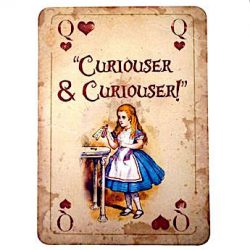 Give yourself permission to shine; to work harder and feel deeper; to radiate brilliance and genuine inspiration; to laugh with abandon and be moved to tears in the presence of beauty for that is true aesthetic alchemy.
Give yourself permission to shine; to work harder and feel deeper; to radiate brilliance and genuine inspiration; to laugh with abandon and be moved to tears in the presence of beauty for that is true aesthetic alchemy.
At times work is just work; you are there out of responsibility and discipline. Life may feel like a parade of stale moments that need to be endured in order to achieve your goal. At other times, however, you gladly suffer the ideal to bring beauty to others or for the sake of the perfect exhibit. These are the occasions when you are elevated to devote your heart with more sensitivity and elegance than you ever thought possible.
Remember the forgotten — for you are defenders of history — and know how to preserve both personal and public memory, often in the face of unspeakable horror. But it is not enough to only preserve the past: You must also be activists, gardeners planting the seeds of tomorrow, inspiring possibilities and nurturing potential. As gifted members of the Museum Nation, you come into daily contact with authentic artifacts as well as non-material culture. You, more than most, are recharged by these cathartic interactions.
Be an independent thinker; speak up and act out. Listen for the Muses themselves to guide you. These inner voices and eternal spirits — as much as anything you’ve studied in the academy — are at your service. Museum professionals are necessary partners in creation. You are a secular priesthood, learned elders and shamanic guides to the hidden stories, the profound mysteries of our various cultures. You are the noble gatekeepers, guardians of our treasures, masters of ceremony, architects of experience.
House in Worcester, England, with the emblem of Aldus Manutius, Festina Lente: make haste slowly
You are also Nation Builders. Sydney Jones, a past president of the Canadian Library Association, related the following anecdote: He was in a New York City cab and got into conversation with the taxi driver. “This young man in his 20s had recently moved to the United States from India…. After some time, he asked me and my colleagues what we did for a living. I responded that we were librarians. Without missing a beat, he replied, ‘So you are nation-builders.’ I looked at him, wondering what on earth he thought I had said. He saw my puzzled expression and added, ‘You collect knowledge so that everyone may learn.’[43]
Our museums are not just other buildings crowding the landscape; they are also sanctuaries that preserve and celebrate the highest aspirations of humanity. We have only been granted a few decades of life and an even shorter time with the privilege of working in museums. Be bold; be brave. It is not just your responsibility; it is also your birthright, your inheritance, your opportunity and your dream.
“It’s not the darkness we fear, it’s the light behind the door. It’s not the answer we can’t hear, it’s the question we won’t ask.” But don’t be intimidated by the darkness for it, too, is habitat to half the world and much of our inner lives. In this regard, one of my favourite books is the intriguing In Praise of Shadows published in 1933 by the Japanese author Jun’ichiro Tanizaki. It is an extended essay that contains “perfect descriptions of lacquerware under candlelight and women in the darkness of a house of pleasure. The result is a classic description of the collision between the shadows of traditional Japanese interiors and the dazzling light of the modern age.”[44] Look to the shadow as much as the light for they are twins in the duality of creation.
- Remember the big picture — go there often — but never abandon the details. The universal and the particular partake of the same essence, differing only in scale.
- Know that everything that is, or ever will be, is a technology. Technology is taking personal interest in a museum visitor as much as utilizing interactive electronics.
- Don’t worry too much about keeping pace with acceleration. Stay current but within reason. Respect tradition as much as innovation; remain riveted in the wisdom of the past while constantly celebrating the opportunities of daily renewal. Tradition is not an archaic punishment: It is wings and roots, an archive of humanity’s accumulated information distilled into knowledge and ripened into wisdom.
- Re-create yourself every day; forgive yourself and others every night. Remember the secret of the Sabbath, whether once a week or whenever necessary, even now, in the midst of what the Buddhists refer to as the tyranny of an overly busy monkey mind. It’s not just that we have to keep pace with accelerated technologies; we can also provide a complimentary cadence, a different rhythm, the ability to say no when necessary, the power to create a nourishing centre that is anchored in the radical astonishment of the present moment.
Now you, along with Nasreddin, know what I was going to speak about today. In the end, I have come to appreciate all existence as a choreographed dance, a pas de deux of dynamic and static technologies. We are technology grounded in tradition and encouraged by innovation. The museum — whether walled or unbound — is a microcosmic vessel. Each one of us is also an entire world: Our bodies may be a temporary abode but our psyches fly on the wings of forever.
With that in mind, I’d like to share a closing poem.[45]
Museum as Matter and Metaphor:
A contemplative stroll in an archetypal garden
Museums are inspired creatures: they are cajoled into existence by the grace-filled spirit of memory
and are often temples — some grand, others humble — to the Muse of History,
unforgiving master that hides none yet protects all. Museums offer deep
reflections in timeless mirrors for as long as we can, or dare, see.
Are we, ourselves, not also living museums?
Do we not carry within us the memories of forever and the reach for exceedingly
impossible goals? Are our faces not etched with the story of our lives and
do our eyes not betray both the spark and the tears of all our eternities?
Our bodies are maps for the literate, for those who would read us;
our minds, treasures for those who would search us;
our feelings, songs for those who would sing us;
and our spirits still soar beyond the painful
abuse of this world’s temporary pilgrimage.
Surely, our journeys are permeated
with a soulful metamorphosis
— layered, profound and
breathless — so much
so that,
in the
end,
we
finally
come to appreciate
that we are all museums.
*
Yosef Wosk, Ph.D., OBC, was the Director of Interdisciplinary Programs in Continuing Studies and still serves as Shadbolt Fellow and Adjunct Professor in the Department of Humanities at Simon Fraser University where he developed seminal programs such as The Philosophers’ Cafe and The Canadian Academy of Independent Scholars. In addition to being an ordained rabbi and receiving two honorary doctorates, he holds PhDs in Religion & Literature as well as in Psychology, and Masters degrees in Education and in Theology. Yosef has founded and supported hundreds of libraries worldwide, endowed Vancouver’s Poet Laureate, and lectured at a number of universities and institutes of higher learning throughout the world. Identified as one of the top ten thinkers and most thoughtful citizens in the province, he is an appointed member of The Order of British Columbia, a recipient of both The Queen’s Golden and Diamond Jubilee Medals and included in Canadian Who’s Who.
*
Endnotes
[1] Yosef Wosk’s Kelowna keynote address to the B.C. Museums Association, October 2018, is available as an online podcast at www.podbean.com/media/share/pb-wvtys-a1d37d
[2] Lyrics from the song Knockin’ On Heaven’s Door by Bob Dylan (1973).
[3] Most recent estimates suggest that the age of the known universe is 13.8 billion years. Its approximate size spans a distance of 93 billion light years. These estimates will continue to be revised as more powerful scientific instruments are invented to gather and interpret data.
[4] From front flap of Mumford’s The Myth of the Machine: Technics & Human Development (London: Secker & Warburg, 1967).
[5] www.dictionary.com/browse/technology.
[6] Genesis 1:26-27; 5:1; 9:6.
[7] See Really Useful: The Origins of Everyday Things by Joel Levy (Collingdale, PA.: Diane Publishing Company, 2002). In his introduction, Levy writes (albeit with a Eurocentric bias): “Many everyday objects have surprisingly long histories, dating back to the dawn of civilization…. Their development often follows a pattern: invented by the ancient Egyptians or Babylonians, perfected by the Greeks and Romans, lost in the Dark Ages, and rediscovered in the Middle Ages, mechanized and electrified by the Victorians, and mass-produced in the 20th century.”
The continuing Industrial Revolution of mass-produced goods made them affordable to almost everyone, so much so that we are now “the consumer generation” and have had to learn to deal with our own excess including storage, garbage, and pollution so significant that it is causing global climate change. This has led to inventive storage as well as advanced organizational systems and recycling technologies but also to obesity and massive clean-up operations.
As technologies progressed — they were easier to manufacture, less expensive, and available to all — there was also a democratization of knowledge (witness the 15th Century’s Gutenberg Revolution and the present computer revolution) and political power with the shift in power from royalty to nobles to the people. A clever cartoon depicting the tension of this transfer depicts England’s King Arthur sitting with his knights at the Round Table, purportedly as equals. The caption, however, belies the illusion as the king proclaims: “It is true that we are all equal, but by dint of my crown and sceptre I am just a little more equal than the rest of you” (unknown source; c. 1998).
Buckminster Fuller gave pithy expression to this evolution towards equalization when he described the world as “Spaceship Earth with first class accommodations for all”. See Fuller’s Operating Manual for Spaceship Earth (Carbondale: Southern Illinois University Press, 1968) and (New York: Simon and Schuster, 1969).
There may be various modes of democratization and Declarations of Human Rights, but draconian measures of forced equality have never proven successful. Under what turned out to be dictatorial Communist regimes, most notably in twentieth-century Russia and China, perhaps as many as 110 million people were killed in the name of social engineered equality. Beleaguered citizens often turned to humour to help relieve the tension. One such joke depicts a Bolshevik haranguing a crowd in front of the Kremlin promising everyone a reward of strawberry ice cream. A young girl at the back raises her hand and cries out: “But I don’t like strawberry ice cream,” to which the organizer responds: “Come the revolution you will like strawberry ice cream.”
[8] London: Pan Books, 1979.
[9] Quoting Fit the Seventh from the original Hitchhiker radio series, on Christmas Eve, 1978. Also found in Geoffrey Perkins and Douglas Adams, The Hitchhiker’s Guide to the Galaxy: The Original Radio Scripts (London: Pan Books, 1985).
[10] These Ten Elemental Principles appear in a multitude of guises. They are further complimented by the Four Worlds of Kabbalah, the Jewish mystical tradition, where they are described as the realms of Asiyah Physical Action, Yetzirah Emotion, Beriah Intellect, and Atzilut Spirit. Much study is required to comprehend these esoteric teachings. Not everyone who searches is granted understanding. In one Buddhist text, the Buddha — in his fully realized consciousness — described himself as “the elder brother of the universe”, i.e. identified with the Primordial Principle preceding creation. For a cursory review of the origins of the idea of technology, see Evan Scherr’s posting from February 16, 2014, evanscherr.wordpress.com/2014/02/16/origin-technology/.
[11] Even Animals Collect Things by William Byrk, Aug. 27, 2002 (updated 2015), www.nypress.com/even-animals-collect-things/.
[12] Diane Ackerman, The Moon by Whale Light and other adventures among bats, penguins, crocodilians, and whales, p. 131 (New York: Vintage Books, a division of Random House, 1992).
[13] For an article on Criswell and a short video of his famous introduction to Plan 9 from Outer Space, see en.wikipedia.org/wiki/The_Amazing_Criswell.
[14] quoteinvestigator.com/2016/03/20/pulse/.
[15] This has been a well-debated concept through various civilizations and centuries. Cf. “How was the universe created if physics states matter can neither be created nor destroyed?” www.physicscentral.com/experiment/askaphysicist/physics-answer.cfm?uid=20120221015143 and “The Conservation of Mass-Energy” www.chemteam.info/Thermochem/Law-Cons-Mass-Energy.html; also “Conservation of mass” en.wikipedia.org/wiki/Conservation_of_mass and “Conservation of energy” en.wikipedia.org/wiki/Conservation_of_energy.
[16] Some of these characterizations are from the article: Opinion: Why I Hate Museums, www.cnn.com/travel/article/opinion-why-i-hate-museums/index.html.
[17] Is that the appropriate word – patrons — to describe those whom we serve? It’s not patients but perhaps it could be clients or guests? Or perhaps, even friends? When speaking of libraries — something that is equally applicable to museums — John Ralston Saul commented: “You do not have a commercial relationship with those you serve. Your job is not to serve clients. Libraries build a relationship between books and citizens” (Feliciter, July/August 1998, p. 33).
[18] [Source for this quote forthcoming].
[19] See The Global Brain: speculations on the evolutionary leap to planetary consciousness by Peter Russell (Los Angeles: JP Tarcher, 1983) and related video www.youtube.com/watch?v=B1sr9x263LM. Also refer to the article “Global brain” and numerous related links at en.wikipedia.org/wiki/Global_brain.
[20] Along with our greatly expanded sense of place and space, we now realize that there is no up or down except in relative terms. I first recognized this on an expedition to the South Pole in 2012. On a tour of the U.S. scientific research outpost, the Amundsen-Scott South Pole Station, we visited the library. I noticed a globe of the world with the South Pole turned upwards, a position that we usually associate with the North. I continued to contemplate this illusion until I had the opportunity to ask the Canadian astronaut, Chris Hadfield, whether there was an objective sense of direction in outer space or was it just an Earth bias — or more correctly, a northern hemispheric civilizational bias — that declared North as up and South as down. He corroborated my observations that there is no objective up or down in space; it is determined as needed and is a relativistic calculation. A third confirmation was gleaned in conversation with a nuclear physicist.
[21] Thomas Berry, The New Story: Comments on the Origin, Identification, and Transmission of Values, first published in Teilhard Studies, Number 1 (Winter 1978).
[22] Woody Allen, “My Speech to the Graduates”, New York Times, August 10, 1975, p. 25. The full speech can be accessed at www.nytimes.com/1979/08/10/archives/my-speech-to-the-graduates.html.
[23] Walt Whitman (1819-1892), Song of Myself, 51. The poem is included in his masterpiece, the often-revised book of collected poetry, Leaves of Grass.
[24] Further thoughts on this subject are found in the book Futuretainment: Yesterday the World Changed, Now it’s your turn by Mike Walsh (London and New York: Phaidon Press, 2009). In his opening manifesto, Walsh states that “digital distribution was taking all the familiar formats of media such as music, movies, television and games and turning them into something more fluid, something that consumers could play with.” We witnessed the birth of the Interactive digital revolution and are increasingly engulfed by it as the waters cover the seas (Habakuk 2:14). Technologies are no longer a one-way linear conversation. Digital media is getting closer to total immersion, as in Artificial Intelligence and brain-technology interfacials. Much is already wireless — you no longer need an instrument, a record, cassette, or compact disc, not even a book, nor do you have to go to the store to buy one. All kinds of information in multiple formats serving every sense are now instantaneously available. They transcend time and disappear space. “In a world where every piece of content is available to anyone at any time, there is no need for broadcast towers to beam everything out…. People start to rely on a different kind of network: an Audience Network.” It is on demand, anywhere, any time, responsive and smarter than ever before. “Why believe mainstream marketers who tell you what is worthy of your attention when your friends are a far more reliable source of information?” For the new generation “digital media is not something new, it is entirely natural.” Consequently, I would advise every museum to not only have professional staff and a board of directors but also a Youth Council, those who surf the web with abandon and inhabit the leading edge of evolution.
[25] American Association of Museums, Museum News, March/April 1997, p. 31. “To Be There or Not to Be There: Presence, Telepresence, and the Future of Museums” by William J. Mitchell and Oliver B. R. Strimpel.
[26] They define the downsides of High Presence, i.e. actually visiting the site, as: high cost, fixed location, limited opening hours and numbers of visitors, navigation on foot, and exhibits that are limited to the on-site collection. The benefits include: retaining the aura of the original artefacts and the experience of true scale, unlimited detail, the potential of group experience, and a contextualized setting. The benefits of the Low Presence virtual visit are low cost, flexible locations, always open, unlimited number of visitors but never crowded, hyperlink navigation, and the visitor can combine resources from many other sites, thereby enhancing information. The downsides of virtual visits include the loss of the aura of encountering original artefacts, diminishment of scale and texture, and a decontextualized individual experience.
[27] A similar sentiment was expressed in the article “In Revamped Library Schools, Information Trumps Books” (The Chronicle of Higher Education, April 7, 2000, p. A43). Officials at the University of Michigan’s School of Information “felt there was a need for a new professional with the technological prowess of a computer scientist but the heart and soul of a librarian”. “The amount of electronic information is doubling every 60 minutes,” says John King, dean of Michigan’s School of Information. “How do you decide what to keep and what not? What is the value of the information?” One handheld device can access far more print publications, pictures or film than the largest material library or museum could ever hold. However, this electronic amplification of information does not negate many earlier technologies, for each retains its unique veracity of experience.
[28] BrainWorld Magazine, thematic issue on The Future. Issue 1, Volume 10, Fall 2018.
[29] Ibid. p. 58. This estimate of atoms in the universe is very low. According to another source (www.universetoday.com/36302/atoms-in-the-universe) the equation is exponentially greater: “It is estimated that the there are between 1078 to 1082 atoms in the known, observable universe. In layman’s terms, that works out to between ten quadrillion vigintillion and one-hundred thousand quadrillion vigintillion atoms.”
[30] Genesis 3:1-15.
[31] “Early Trains Were Thought to Make Women’s Uteruses Fly Out” by Janet Burns, August 26, 2015. mentalfloss.com/article/67806/early-trains-were-thought-make-womens-uteruses-fly-out.
[32] From the Bhagavata Purana. This is a small excerpt from a longer and fascinating story. See online for a number of versions in various languages, including Hindi, as well as illustrations and animated productions.
[33] The neighbourhood is no longer just a few blocks long but rather the Whole Earth. The early-16th century Copernican realignment demonstrated that Earth was no longer the centre of the Solar System but rather a mid-size planet revolving around an average star, one of over a hundred billion in our galaxy that we named the Milky Way (by attaching names to things we generate the illusion that we have defined, tamed, and owned them). When we sent extra-terrestrial telescopes into space, we discovered that the cosmos was thousands of times larger than we once thought and we were humbled, once again, to accept that our galaxy is a speck of dust, just one of billions more in an expanding material universe.
[34] Some people worship knowledge, using it as a weapon, as a symbol of status and power. Once again, we must learn to appreciate this way of perceiving reality but not be enslaved by it nor make it into a false idol. In 1709, Alexander Pope composed a poem, An Essay on Criticism, that contained these enduring words: “A little learning is a dangerous thing; drink deep, or taste not the Pierian spring: there shallow draughts intoxicate the brain, and drinking largely sobers us again.” To which Einstein (1879-1955) responded: “A little knowledge is a dangerous thing. So is a lot.”
[35] Fermentation adds flavour while giving time to break down some of the sugars and starches, making them easier to digest while also increasing the availability of vitamins and minerals for our bodies to absorb. The leavening action in dough is also an appropriate metaphor. These transformative processes are similar to the maturation of information into knowledge and eventually into wisdom.
[36] Examples of this are the Australian Aboriginal Dreamtime and the biblical Sabbath, the ability to live and work for six days but to know how to then take a day off from relentless activity and consumption, to rest and re-soul on the seventh. You don’t have to wait for the weekend to take time off. Any moment can be liberated from the incessant parade of what is often self-imposed modern slavery. Take a moment, any moment, this moment, to declare your freedom from innovation, from action, from deadlines. This is no deadline but rather a lifeline — a gift of universal breath in the midst of reliance on alleged technological imperatives.
[37] “Verse” is sometimes translated as “poem”. The excerpt is from Rilke’s novel, The Notebooks of Malte Laurids Brigge, originally published in 1910. There have been a number of translations from the German into English including that by M. D. Herter Norton (New York: W. W. Norton & Company, 1949) and Stephen Mitchell (New York: Random House, 1983).
[38] A Meditation on Small and Large Museums by Stephen E. Weil (Washington: Smithsonian Institution Press, 1990). See New York Times online obituary for more background as to Weil’s significant contributions to museums, law, and the arts. Another of his seminal publications was Making Museums Matter (Washington: Smithsonian Books, 2002). Although many museums are beginning to serve a role closer to the centre of civic life, they still seem to be in the “nice to have” category rather than being elevated to “essential services” status (see Elaine Heumann Gurian, BC Museums Association conference speaker, 2005).
[39] The shelf life of most electronic products today is only a few months and you can be assured that the only reason the next innovation is not already at market is because the consumer — already inflated with products — would not be able to keep up with the inventors and manufacturers. I remember, about thirty years ago, suffering from culture shock for the first time. I took a broken radio in for repair. The technician took one look at it and advised me that it would cost more to fix than to just purchase a new one. I was confused for I was of the generation that fixed and kept things. Now we have planned obsolescence built into our system, but at least there is a proliferation of recycling programs.
[40] William Morris (1834-96): “Have nothing in your house that you do not know to be useful, or believe to be beautiful.”
[41] Groucho Marx (1890–1970). Original quote: “Those are my principles. If you don’t like them, I’ve got others.” Another version: “Those are my principles, and if you don’t like them . . . well, I have others.” Cannot locate original source. Karen DeCrow offered this fine quote in praise of Groucho’s wit: “As I grow older, I become more and more of a Marxist — Groucho, that is. When you have lived two-thirds of your life, you know the value of a good joke.”
[42] An anecdotal story, somewhat disguised, recounts that soon after Lohman arrived at the museum he went for a walkabout to see how things were operating and to casually visit with staff. He approached one curator and asked what they were working on. “We were asked to loan some First Nations artefacts to a major exhibit in another city”, he was told. To which Jack queried: “And what did you tell them?”, to which he received the response: “The same thing that we always tell them: No.” “From now on,” the new director advised, “we always tell them yes!”
[43] “1998 CLA Annual Conference — Inaugural Address,” by Sydney Jones; Feliciter, July/August 1998.
[44] From the back cover. In Praise of Shadows by Junichiro Tanizaki, translated from the Japanese by Thomas J. Harper and Edward G. Seidensticker (London: Vintage Books, 1977 and 2001).
[45] A variant originally appeared in the article “Museum as Metaphor and Matter: A Preface to the Jewish Museum & Archives of British Columbia” by Yosef Wosk in the Commemorative Book celebrating the inauguration of the Jewish Museum & Archives of British Columbia, Jewish Historical Society of B.C., p. 25-28, (March 2007). It was later edited and laid out to resemble a chalice, entitled Museum as Matter and Metaphor, and prepared as a keepsake designed by Robert Reid and Yosef Wosk for the Canadian Museums Association Annual Conference, Toronto, 2009. 500 copies were printed in Vancouver by David Clifford at the Black Stone Press on paper handmade by Reg Lissel. The poem appeared in a second keepsake for the Museum of Vancouver Legacy Dinner, October 6, 2014; 218 copies printed by David Clifford at the Black Stone Press on Arches 90 lb. mould made paper. The title for that iteration was Museum as Matter and Metaphor: Observations from a contemplative stroll in an archetypal garden by Yosef b’R Moshe Aharon Ha’Levi.
*
The Ormsby Review. More Books. More Reviews. More Often.
Editor/Designer/Writer: Richard Mackie
Publisher/Writer: Alan Twigg
The Ormsby Review is a journal service for serious coverage of B.C. books and authors, hosted by Simon Fraser University. The Advisory Board consists of Jean Barman, Robin Fisher, Cole Harris, Wade Davis, Hugh Johnston, Patricia Roy, David Stouck, and Graeme Wynn. Scholarly Patron: SFU Graduate Liberal Studies. Honorary Patron: Yosef Wosk. As of September, 2018, Provincial Government Patron: Creative BC
“Only connect.” – E.M. Forster
Ben Shahn, lithograph from “For the sake of a single verse,” 1968



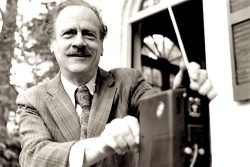
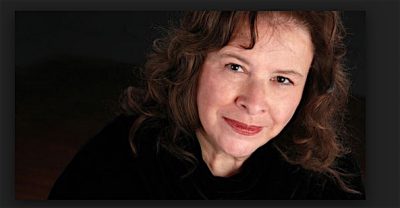


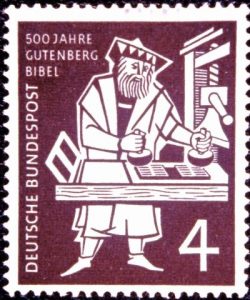
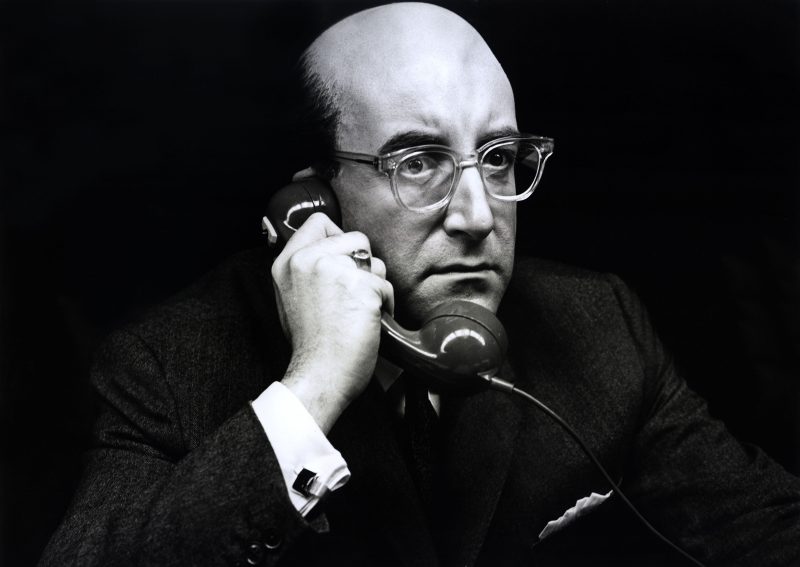

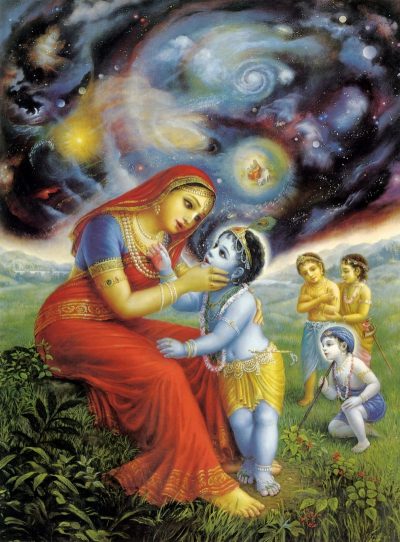


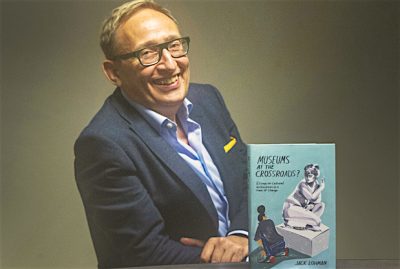

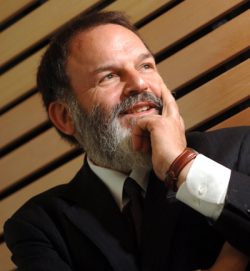

Leave a Reply